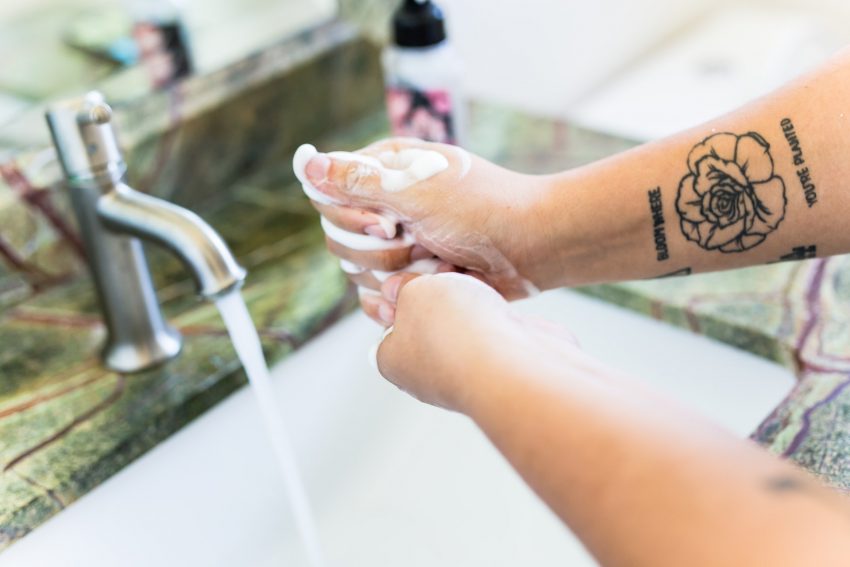Changes in our skin as we age are inevitable, including loss of moisture, changes in…

Does Laser Tattoo Removal Leave Scars?
It’s the age-old question. Okay, maybe not age-old. But it’s a common question people ask when they start to consider if laser tattoo removal is right for them; will removing tattoos with a laser leave scars?
The fact is, laser tattoo removal is actually quite similar to getting the tattoo in the first place. When you had your ink done, the chances are high that your artist spoke to you about aftercare, which is designed to help prevent scarring throughout the healing process.
How you treat your skin, and its condition, affects tattoo removal as much as when you got the tattoo. Though most people find that there’s little to no scarring from the process, it does happen.
More frequently occurring in those with darker skin tones, scarring can come about due to a loss of pigmentation. But this will likely come back over time and become less visible.
But there are things you can do that help prevent scarring, both before and after your laser tattoo removal treatment.

Preventing Tattoo Removal Scars (Before Treatment)
Before your treatment begins, you’ll probably be thinking and feeling a lot of things; apprehension, or perhaps excitement. However, we’re talking about a fair bit earlier than sitting in the waiting room.
- Generally, the better you look after your skin, the less likely it is you’ll scar after laser tattoo removal. The first thing you can do for success is quit smoking. The sooner the better (for a number of reasons). But even if you only quit a week or so before your treatment, it will help.
- Closer to the time of your appointment, you should take a wide range of multivitamins that will help boost your overall health as well as the health of your skin. Vitamin E, aloe and zinc will help with healing your skin.
- You should also be drinking plenty of water. Hydration is key both before and after your treatment to help speed up your recovery time.
Preventing Tattoo Removal Scars (After Treatment)
Though laser tattoo removal isn’t painful, per se, it still requires recovery time – much like the tattoo itself did.
Your practitioner will make sure you’re fully apprised of appropriate aftercare. While this will probably include most of the advice we share here, be sure to listen to their advice, too.
Tip #1 – Daily Washing
In addition to drinking plenty of water, make sure you take it easy for a few days. Set aside some time to wash the treated area with mild soap and water twice daily.
Though antibacterial soaps might seem like a good idea, you should avoid them; these are likely to cause irritation and even inflammation in the area, which can lead to slower healing and scarring.
Tip #2 – Pat, Don’t Rub
After cleaning the area, don’t rub it when you’re drying it. A quick pat with a paper towel is far more effective. And it’s gentler, too!
This is because rubbing the area with a towel or something similar can damage the scabs that have already formed; if these come off too early, the healing process can take longer.
Tip #3 – Use the Right Products
Once you’re done washing and drying, apply some ointment or cream to the area. Appropriate products will be recommended to you by your practitioner, and this is for a reason; harsh, strong or perfumed creams and moisturisers can do more harm than good.
Tip #4 – Dressing Changes
Change the dressing on the treated area of skin each time you wash it, using clean, fresh bandages or similar. This is to prevent you from getting to the scabs or blisters that may appear after your laser tattoo removal.
It’s incredibly important not to pick or pop these, as doing so can cause scar tissue to form.
Tip #5 – Sunshine
No matter how glorious the weather is, this piece of advice is crucial; you need to stay out of the sun after laser tattoo removal to prevent scars. This applies for at least a few weeks after your treatment. Sun exposure can cause further blistering and extend the healing time, and we wouldn’t want that!
Even several weeks after your treatment, you should remember to use an SPF for sun protection.
Tip #6 – Patience
This is a big one to give your skin the time it needs to heal; make sure you leave at least six weeks between your laser tattoo removal sessions.
Yes, we understand this requires a significant level of patience. But your body is hard at work long after each treatment. It needs this time to continue breaking down the ink particles in the tattoo. This essentially means that your results will be better the longer you wait.
Scar-free laser tattoo removal?
All of these tips combined should put quite a dent in your chances of scarring after tattoo removal. That said, we can’t guarantee you’ll be completely scar-free.
What’s important to remember is that scars or no, lasers used in laser tattoo removal aren’t actually causing damage to your skin cells. They’re targeting the pigmentation beneath, leaving your skin cells intact.
The lasers used in tattoo removal procedures have been specifically developed to only travel to a particular depth in your skin (the layer where the ink and pigment are). Unless you have an unassociated history of scarring (such as keloid scarring), you shouldn’t have to worry.
In addition, a worthy note to keep in mind; laser tattoo removal won’t remove any scars that your tattoo-to-be-removed was covering. Likewise, if your skin scarred during your tattoo’s healing period, the removal process won’t erase those scars. In fact, they might become all the more visible once the tattoo is removed.
Fear not though, there are plenty of treatments for scarring available these days.
Are there other options?
Yes and no.
If you have a tattoo that you no longer like the look of, that healed poorly or you’re simply unsatisfied with, there are many tattoo artists who perform cover-up work specifically designed to hide your tattoo.
But if you want your tattoo removed with no sign it was ever there, laser tattoo removal is the only real option that’s non-invasive and minimises scarring.
It can take several sessions and a year or more to remove your ink as thoroughly as possible. And this all depends on the colour and size of your tattoo. But even so, it’s considered the best option available.
Tattoos vary widely, from colouration to depth and even due to their age. Yet even the most stubborn, old and deep tattoo isn’t a hopeless case. Even strong colours like green, pale blue and yellow can be faded with treatments.





